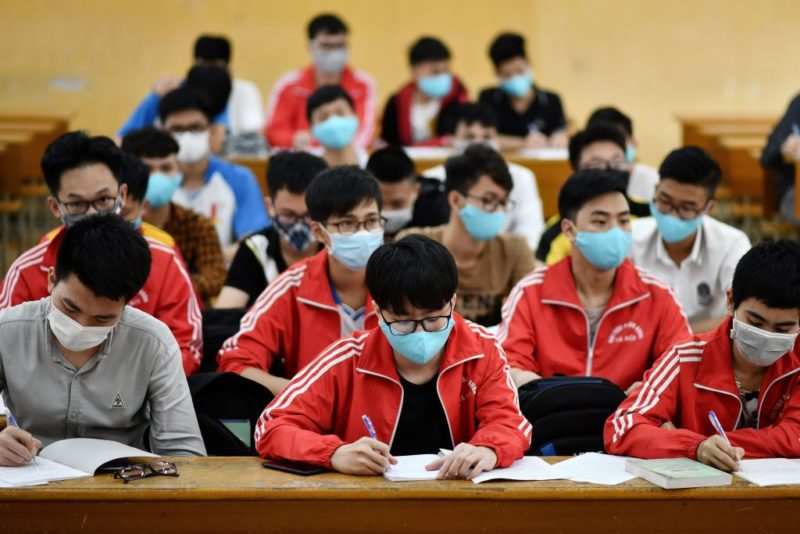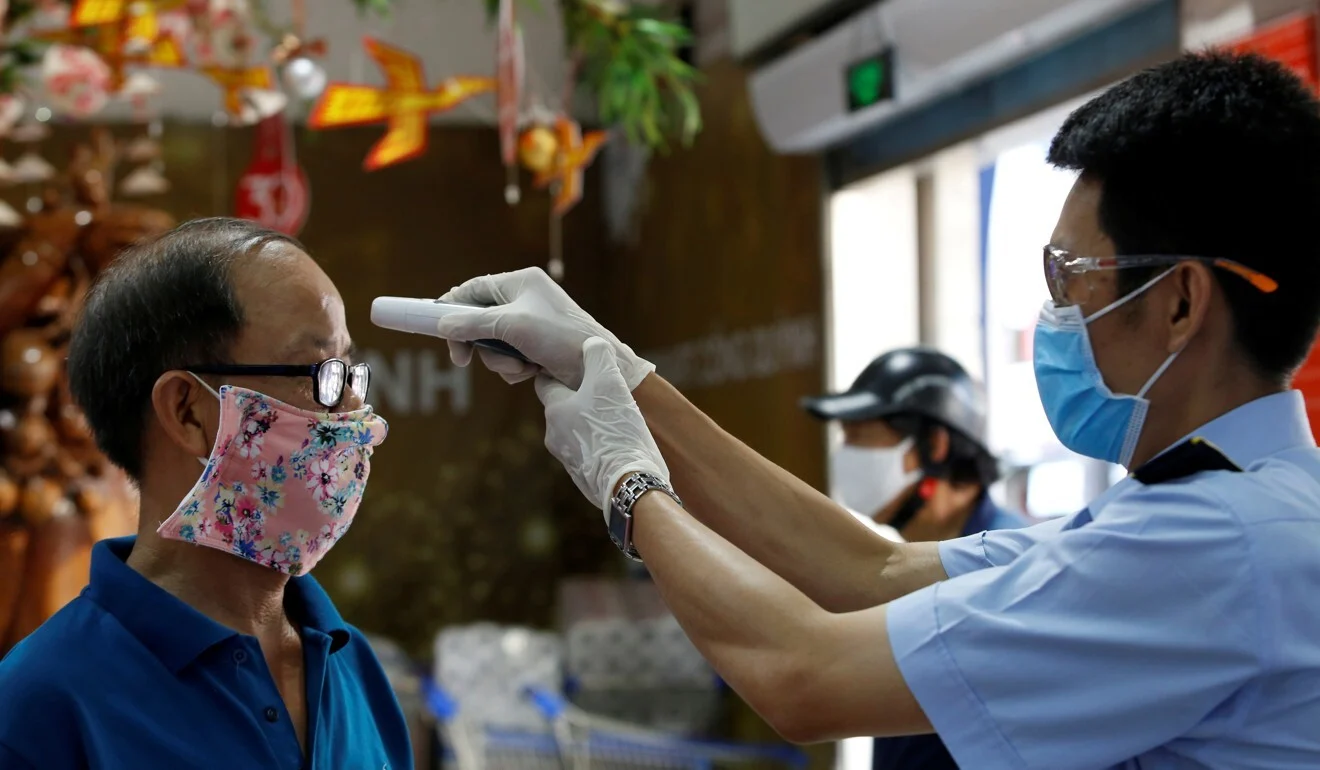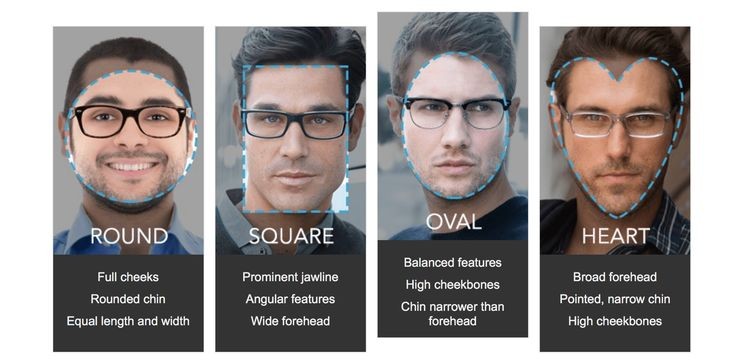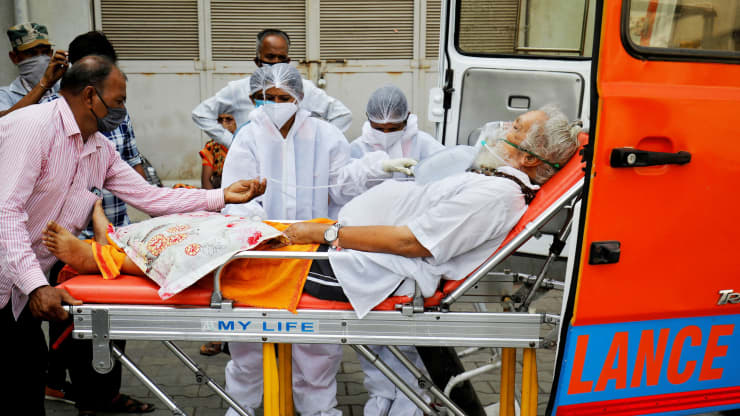Beard and glasses putting you at risk of coronavirus?
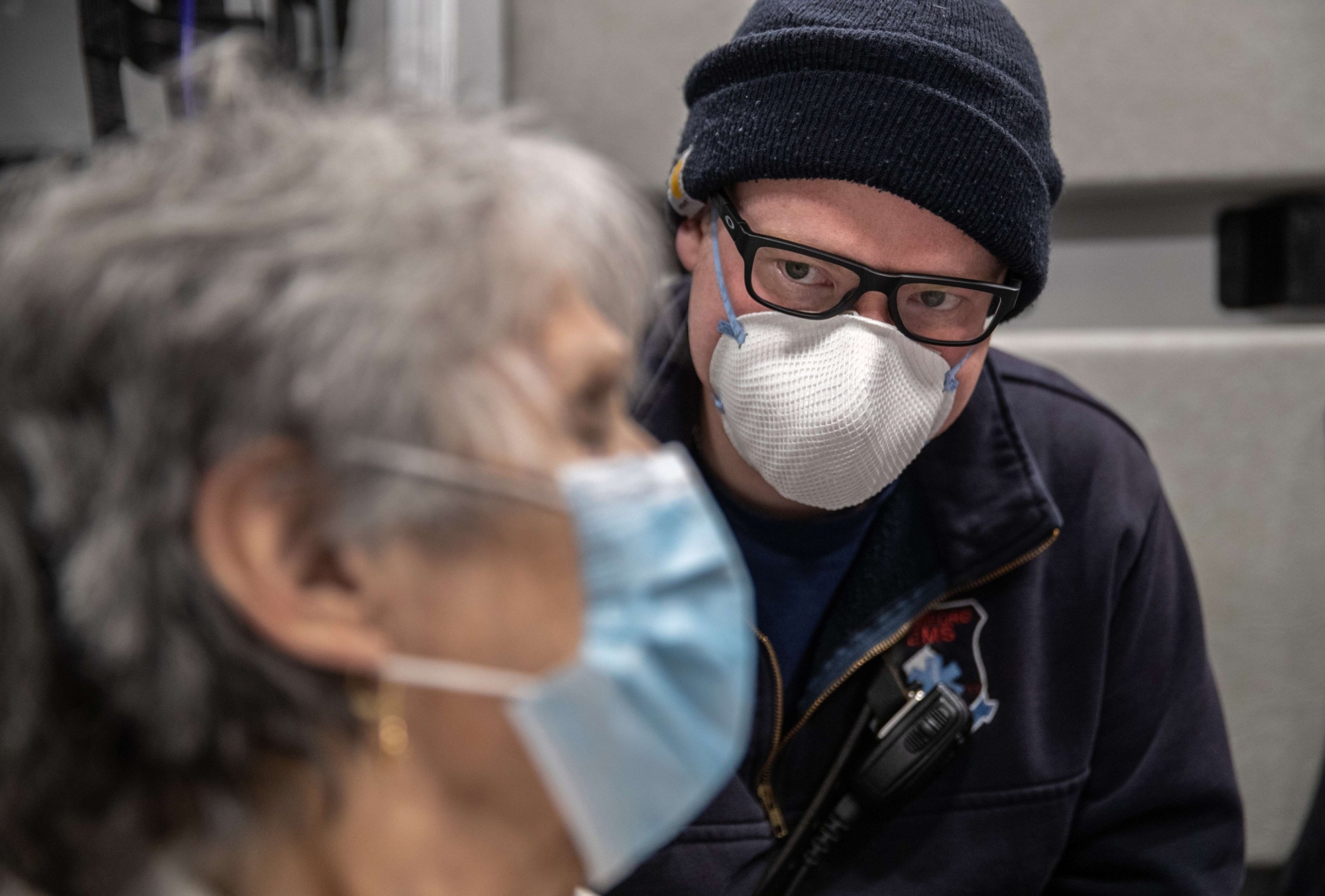 |
| A paramedic watches over Janet Gazo, 89, while transporting her by ambulance to Stamford Hospital, Connecticut, Friday, April 3, 2020 (AFP Photo) |
GLASSES OR CONTACT LENSES?
When it comes to the fight against coronavirus, experts couldn't stress the importance of not touching your face enough. But if you wear glasses, that is near impossible when you're constantly having to push them up your sweaty nose. Does that mean you should switch to contact lenses during this period?
According to CNA, some experts are encouraging people to stick to glasses. The American Academy of Ophthalmology (AAO), for instance, noted on its website that “contact lens wearers touch their eyes more than the average person”. “Substituting glasses for lenses can decrease irritation and force you to pause before touching your eye,” said Dr Sonal Tuli from AAO.
Furthermore, glasses or sunglasses can shield your eyes from infected respiratory droplets, according to the AAO. However, don't fall under the false sense of security that your glasses will 100-per-cent keep your eyes safe; your peepers can still be exposed from the sides, tops and bottoms of your eyewear.
“If you’re caring for a sick patient or potentially exposed person, safety goggles may offer a stronger defense,” advised the AAO.
Using a cloth mask caused your hot breath to funnel right into your glasses, instantly making them foggy and useless. There is no simple, perfect trick to solve the problem of foggy glasses. But there are a few methods you can try, The Cut site stressed.
If you’re able to mold your mask around your face using a flexible “nose,” you can probably prevent a good amount of fogging. And if you’re handy and planning on sewing your own mask, you can use an online tutorial to insert something bendable (like a bobby pin or a pipe cleaner) into a pocket at the top of your cloth mask.
According to a 2011 study released by the journal of the Royal College of Surgeons of England, performed to help doctors whose glasses fogged up while using surgical masks, washing your glasses with soapy water and letting them air-dry before you go out can help reduce fogging.
Your glasses become foggy while you’re outside because your hot breath causes condensation on the cool surface of the lenses, and surface tension causes it to stay there. “Washing the spectacles with soapy water,” the study says, “leaves behind a thin surfactant film that reduces this surface tension and causes the water molecules to spread out evenly into a transparent layer.”
WHAT'S ABOUT FACIAL HAIR?
Then, there’s facial hair. While it is convenient for many men to forgo shaving during the circuit-breaker period (you’re not meeting anyone anyway), here’s why you may need to be clean shaven. According to the Centers for Disease Control and Prevention (CDC), facial hair can interfere with the seal of your N95 mask.
The same preventative measure is echoed by the UK’s Health and Safety Executive, which noted on its website that “if there are any gaps around the edges of the mask, ‘dirty’ air will pass through these gaps and into your lungs”.
It was prophetic of the CDC to create the chart below back in 2017. You have to admit, it is a rather entertaining summary of facial hair styles but more pertinent to the current situation is how the different styles can work against the use of masks.
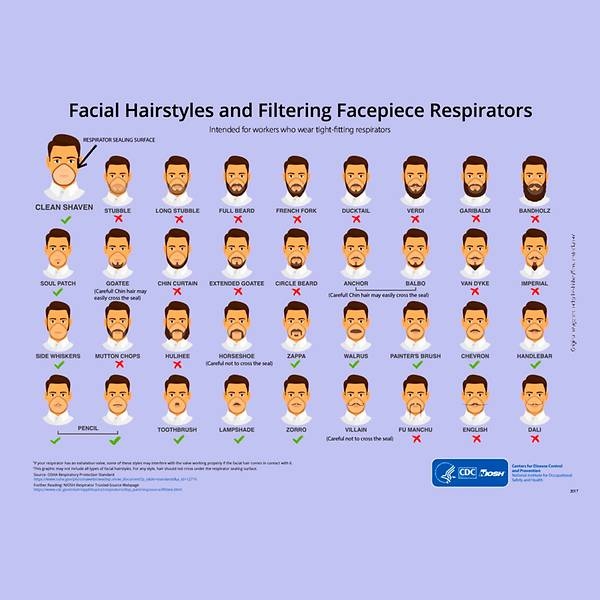 |
| (Art: Centers for Disease Control and Prevention) |
Basically, if your facial hair can be contained within the mask – that includes various styles of moustaches – you’re pretty much in the clear. But the same can’t be said of stubble, beards and goatee.
So, does that mean regular men can’t skip shaving at all? If you’re donning the reusable or surgical masks to make chicken rice runs, that’s not an issue because these masks don’t require a tight seal to work.
Also, having a beard or facial hair does not "trap" the virus closer to your face, said Houston-based board certified dermatologist Dr Monee Thomas on ABC News. "The beard shares much of the same flora as facial skin. Therefore, most of the same precautions we take with our face to keep it clean and healthy should also apply to the beard,” she said.
One of the biggest mistakes people make is that they fidget with their masks, and pull them under their noses or completely off their faces to rest under their chins.
“You should absolutely not be pulling up and putting down your mask while you’re out,” said Shan Soe-Lin, a lecturer at the Yale Jackson Institute for Global Affairs. “If you’re going to go to the trouble of using a mask, leave it on.”
Here are the dos and don’ts of wearing a mask.
DON’T: Wear the mask below your nose.
DON’T: Leave your chin exposed.
DON’T: Wear your mask loosely with gaps on the sides.
DON’T: Wear your mask so it covers just the tip of your nose.
DON’T: Push your mask under your chin to rest on your neck.
DO: Wear your mask so it comes all the way up, close to the bridge of your nose, and all the way down under your chin. Do your best to tighten the loops or ties so it’s snug around your face, without gaps.
And once you’ve figured out the correct position for wearing your mask, follow these tips to stay safe:
— Always wash your hands before and after wearing a mask.
— Use the ties or loops to put your mask on and pull it off.
— Don’t touch the front of the mask when you take it off.
— For apartment dwellers, put the mask on and remove it while inside your home. Elevators and stairwells can be high-contamination areas.
— Wash and dry your cloth mask daily and keep it in a clean, dry place.
— Don’t have a false sense of security.
Masks offer limited protection, and work better when combined with hand washing and social distancing./.
 | Coronavirus can travel up to 4 metres A new study by Chinese researchers examining air samples from hospital wards with COVID-19 patients has found the virus can travel up to 4m – twice the ... |
 | Friendship associations exert themselves to assist the Covid-19 fight The world finds itself today facing a real crisis with human lives lost every hour to a disease called COVID-19 caused by a virus named ... |
 | Japan's startup develops antibacterial copper fiber sheet A thin sheet of copper fiber that can speed up the process of inactivating virus particles, potentially stopping them from causing infections, has been developed ... |
 | Cats found able to catch coronavirus in a study, dogs not likely Cats can become infected with the coronavirus but dogs appear to be less vulnerable, according to a study published on April 8. However, dogs, chickens, ... |
Recommended
 Handbook
Handbook
Vietnam Moves Up 8 Places In World Happiness Index
 Handbook
Handbook
Travelling Vietnam Through French Artist's Children Book
 Multimedia
Multimedia
Vietnamese Turmeric Fish among Best Asian Dishes: TasteAtlas
 Handbook
Handbook
From Lost to Found: German Tourist Thanks Vietnamese Police for Returning His Bag
 Handbook
Handbook
Prediction and Resolution for the Disasters of Humanity
 Handbook
Handbook
16 French Films To Be Shown For Free During Tet Holiday In Vietnam
 Handbook
Handbook
Unique Cultural and Religious Activities to Welcome Year of the Snake
 Handbook
Handbook

